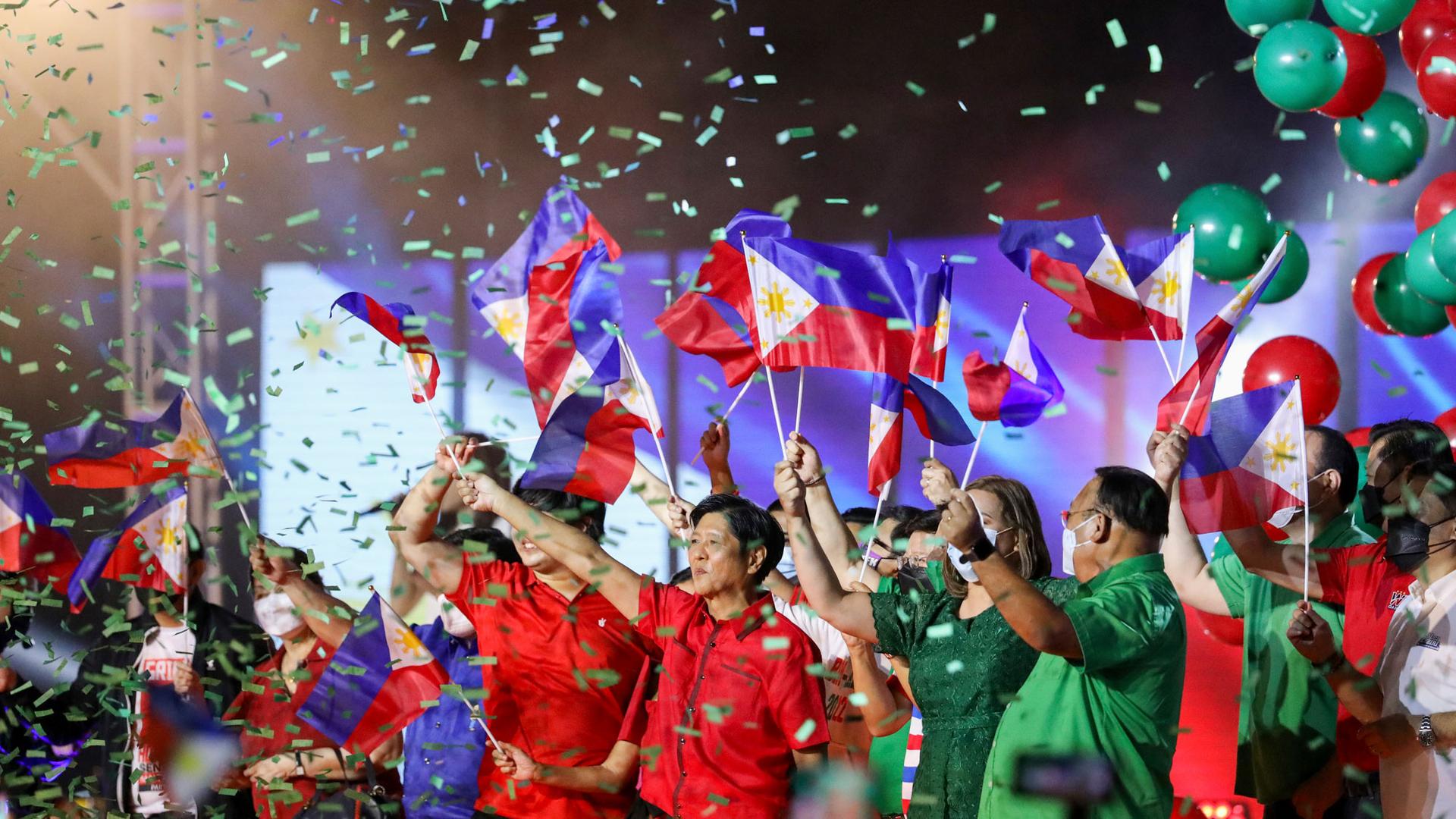For decades, campaign jingles have been the soundtrack to elections in the Philippines.
With the upcoming election in May, it can sometimes feel like a “circus” of huge, enthusiastic crowds, awe-inspiring performances and, of course, the upbeat jingles.
The catchy compositions can range from a short 30-second snippet to a full-length song.
Related: Campaign season in the Philippines ramps up
Jingles have been election staples in the Southeast Asian country since the 1950s, when then-presidential candidate Ramon del Fierro Magsaysay ran for president with the “Magsaysay Mambo.”
“[‘Magsaysay Mambo’ is] very catchy — it basically made history.”
“It’s very catchy, it basically made history,” said Krina Cayabyab, a composer and assistant professor with the musicology department at the University of Philippines College.
The 1953 jingle, a mash-up of Tagalog and English, tells the story of a disorderly country and calls out the corruption of the then-incumbent president.
“Our democracy will die unless we elect Magsaysay,” the catchy chorus with the mambo beats proclaimed.
“Since that campaign jingle was launched, jingles have been all over the place [over] the following years and decades,” Cayabyab said.
Related: A star-studded list of candidates files for president in the Philippines
What makes a good jingle?
Nearly every candidate running a national campaign has to have one, said Anton Gabriel Largoza-Maza, a master’s student at the University of the Philippines, who studies campaign jingles.
A successful campaign jingle, he said, involves a catchy tune that is often a parody or directly lifted from a popular song, promotes name recognition of the candidate, and resonates with the constituency either through the candidates’ own stories or through their campaign promises.
There are several good examples from this year’s campaign, but the 2010 presidential campaign jingle of candidate Manny Villar stands out, Largoza-Maza said. The “Earworm,” which remains wildly popular to this day, addresses the daily hardships of poverty in the Philippines, like unemployment and living in unhygienic conditions.
In the jingle, Manny Villar promised to be the solution to these problems. Villar, himself, was born into poverty in Tondo, a district of Metro Manila, but is now one of the wealthiest men in the Philippines.
Villar served as a senator from 2001 to 2013, and also served two years as Senate president.
Related: Philippine president reverses threat to void longstanding defense deal with the US
“That’s one of the things that most candidates hinge on. … They make this image that they’re one with the poor, or they’ve been part of the poorest of the poor.”
“That’s one of the things that most candidates hinge on,” Largoza-Maza said. “They make this image that they’re one with the poor, or they’ve been part of the poorest of the poor.”
Still, a successful campaign jingle doesn’t always translate into guaranteed votes or a winning campaign, he said — but they do “appeal to the musical minds of the Filipino people.”
Music of the moment
Campaign jingles tend to reflect popular music at any given time.
Just as the mambo beat was popular in the 1950s, candidates are now using more pop, hip-hop and rap elements. This election season presidential candidate Ferdinand “Bongbong” Marcos Jr. has even revised the jingle his father, the late dictator Ferdinand Marcos, used in the 1970s to make it sound more trendy for today — all while still keeping with the message that a Marcos in power will bring change.
Singers, songwriters and composers from all over the country work on these jingles. Sometimes they’re paid; sometimes they do it for free for a candidate who has their support.
Musician Krina Cayabyab just composed her first campaign jingle for senatorial candidate Teddy Baguilat, a representative of Indigenous Filipinos.
She said she worked to incorporate both northern and southern Indigenous Filipino rhythmic and pitch elements, while also trying to craft a more popular, modern sound. The jingle sings about how Baguilat, an Indigenous local hero, will work for the Filipino people.
“[Teddy Baguilat’s] advocacies include the development of culture, environmental awareness, the rise of the Filipino people. … So, immediately I said, yes, I want to support this candidate.”
“His advocacies include the development of culture, environmental awareness, the rise of the Filipino people,” she said. “So immediately I said, yes, I want to support this candidate.”
